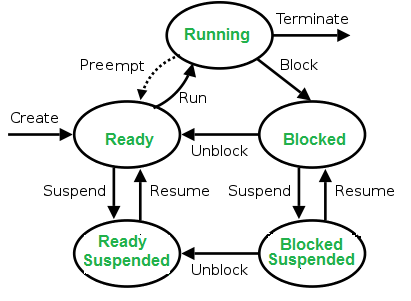Process Management in os:
Operating systems are responsible for managing system resources, including hardware and software components, to ensure that all applications and services run smoothly. One of the critical tasks of an operating system is process management. In this blog, we will discuss what is meant by process management and how it works.
What is Process Management?
A process is a program in execution. It includes the current state of the program, such as its memory allocation, the value of its registers, the open files it has, and other details. The process management system in an operating system is responsible for creating, executing, and terminating processes, as well as ensuring that they have the resources they need to run correctly.

The process management system performs the following functions:
Process Creation: The process management system creates new processes when required. This includes assigning a unique process ID, allocating memory for the process, and initializing the process's attributes.
Process Scheduling: Once a process is created, the operating system schedules it for execution. The scheduling algorithm decides which process should be executed next, based on factors such as priority, time slice, and the process state.
Process Execution: During the execution of a process, the process management system allocates system resources such as CPU time, memory, and I/O devices to the process. The system must ensure that each process has the resources it needs and that no process can access the resources of another process.
Process Termination: When a process finishes execution, the process management system releases the system resources allocated to the process and removes it from the list of running processes.
Process States
A process can be in one of several states during its lifecycle. The states are:
New: The process is being created.
Ready: The process is waiting to be assigned to a CPU.
Running: The process is being executed by a CPU.
Blocked: The process is waiting for an event such as I/O completion.
Terminated: The process has finished executing.
Process Control Block
The process management system maintains information about each process in a data structure known as the Process Control Block (PCB). The PCB contains information such as the process ID, state, priority, memory allocation, CPU registers, I/O devices used, and other relevant details. The PCB is used by the operating system to manage the process and make scheduling decisions.
Conclusion
In conclusion, process management is a vital component of any operating system. It ensures that processes are created, executed, and terminated correctly, and that they have the necessary resources to run. The process management system must also manage process states and maintain process information in the Process Control Block. Without proper process management, an operating system would be unable to provide the stable and reliable environment required for modern computing.